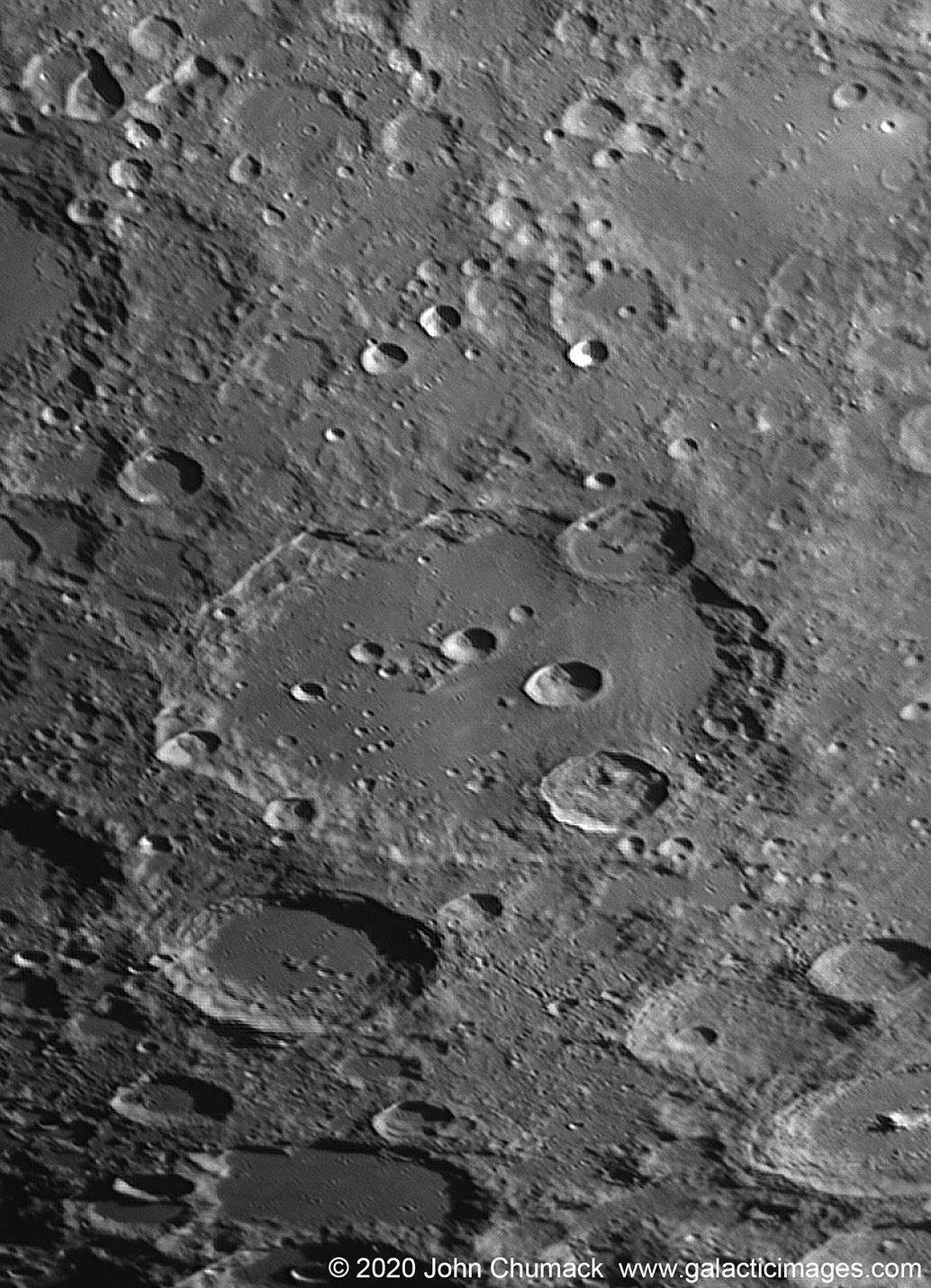Day 6 of my “High Resolution Moon Week” Image #6
Clavius Crater – One of the largest & oldest Impact Craters.
Are you ready for some sharp jaw dropping close-ups of the Moon? Please put them up full screen and Enjoy!
I will be posting a new Lunar close-up every day this week. Also Please comment if you like them….
These Images are all taken with my “COLO” Setup!
COLO = Chumack Observatory Lunar Orbiter aka my backyard Observatory
(old orange tube C8 SCT scope, F6.3 & QHY5IIIL290M Camera), these are so close-up and detailed,
I may as well have been in orbit above the Moon.
All images processed in Autostakkert3, Registax6, PS CC 2020,
FireCapture Ser video files, 600 to 1200 sharpest frames Stacked.
Clavius is one of the largest crater formations on the Moon, and it is the second largest crater on the visible near side. It is located in the rugged southern highlands of the Moon, Clavius size is 231 km (144.4 miles) in diameter, 3.5 km (2.18 miles) deep. Clavius is also one of the oldest(4 billion years) & one of the largest impact craters, and is so large it is visible with the unaided eye, appearing as a notch in the terminator line 1 to 2 days after first quarter Moon. Notice the cool curved string of smaller impact craters inside of the wall on the floor of the main Crater, the largest completely inside the wall on the floor is Rutherfurd Crater. This string of smaller impacts was likely a small grouping of meteors hitting one right after the other. Clavius Crater was named after the Jesuit priest Christopher Clavius, a 16th-century German mathematician and astronomer.
Best Regards,
John Chumack
www.galacticimages.com







